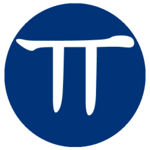Hangeul step 4/fr
|
|
|
| Aide · Astuces · Communauté |

|

|
Contents
Consonnes aspirées
Dans cette partie, nous allons apprendre les consonnes aspirées ㅋ, ㅌ, ㅊ, et ㅍ (ainsi qu'une autre consonne, ㅎ). En regardant l'image de droite, voyez-vous la ressemblance entre les lettres que nous avons déjà apprises sur la ligne du haut et celles de la ligne du bas ?
Avant d'aller plus loin, expliquons ce que veut dire aspiration. L'aspiration est le fait de laisser sortir une forte impulsion d'air en faisant un son. Pour comprendre la différence entre consonnes aspirées et non aspirées, tenez devant votre main devant votre bouche, dites haricot. Lorsqu'on prononce une consonne aspirée, ici h, on doit sentir de l'air sur la main. Hip hip hip hourra commence par un H aspiré tandis que hippocampe non1.
Les nouvelles lettres que nous allons apprendre sont juste une version aspirée des lettres déjà apprises : même prononciation avec plus d'air sortant de la bouche. Et vous pouvez observer que pour écrire ces lettres, il suffit d'ajouter un trait supplémentaire.
- Source: Le Petit Larousse compact édition Larousse - Bordas 1997
Y sound vowels
The vowels we will be learning in this section are ㅑ, ㅕ, ㅛ, ㅠ, ㅖ and ㅒ. Once again, I will ask: Looking at the picture on the right, do you see a resemblance between the old letters we have already learned (top row) and the bottom row? With these new vowels, you are simply adding a 'y' sound (IPA: /j/) in front of our previous vowels. As a simple example, we had previously learned that ㅜ sounds very close to the double o's in the word "moon." So for ㅠ we add a 'y' sound in front of ㅜ and now it sounds like "yoo."
ㅅ reminder
Remember in step 3 we mentioned that ㅅ when combined with the vowels ㅣ, ㅕ, ㅑ, ㅠ, ㅛ it is pronounced like a "sh" sound. It is an "sh" sound anytime it combines with these double stroked vowels and the vowel ㅣ.
Begin lesson
|
| ||||||||||
|
This is pronounced just like ㅗ but with a /y/ sound in front of it. Almost like "yo" in English. For full information about this letter, see ㅛ.
|
This is an aspirated /k/ sound. This is pronounced just like ㄱ but with more air coming out. For full information about this letter, see ㅋ. | ||||||||||
| Practice | |
|---|---|
| 카 | |
| 키 | |
| 코 | |
| 쿄 | |
| 소 | |
| 쇼 | |
|
| ||||||||||
|
This is pronounced just like ㅜ but with a Y sound in front of it. Almost like "you" in English. For full information about this letter, see ㅠ.
|
This is an aspirated /t/ sound. This is pronounced just like ㄷ but with more air coming out. For full information about this letter, see ㅌ. | ||||||||||
| Practice | |
|---|---|
| 투 | |
| 튜 | |
| 수 | |
| 슈 | |
|
| ||||||||||
|
This is pronounced just like ㅓ but with a Y sound in front of it. For full information about this letter, see ㅕ.
|
This is an aspirated /p/ sound. This is pronounced just like ㅂ but with more air emitted from the mouth. For full information about this letter, see ㅍ. | ||||||||||
| Practice | |
|---|---|
| 피 | |
| 표 | |
| 퓨 | |
| 펴 | |
| 겨 | |
| 켜 | |
| 서 | |
| 셔 | |
|
| ||||||||||
|
This is pronounced just like ㅏ but with a Y sound in front of it. For full information about this letter, see ㅑ.
|
This is a /ch/ sound. This is pronounced just like ㅈ but with more air emitted from the mouth. For full information about this letter, see ㅊ. | ||||||||||
| Practice | |
|---|---|
| 지 | |
| 치 | |
| 쳐 | |
| 냐 | |
| 사 | |
| 샤 | |
|
| ||||||||||
|
This is pronounced just like ㅔ but with a /y/ sound in front of it. For full information about this letter, see ㅖ.
|
This is an /h/ sound. For full information about this letter, see ㅎ. | ||||||||||
| Practice | |
|---|---|
| 히 | |
| 호 | |
| 효 | |
| 휴 | |
| 혜 | |
| 계 | |
| ||||
|
This is pronounced just like ㅐ but with a /y/ sound in front of it (not much differently than ㅖ) For full information about this letter, see ㅒ.
| ||||
| Practice | |
|---|---|
| 걔 | |
| 쟤 | |
Real Examples
Practice with these real Korean words. The examples for step 4 have been split. Half of the examples for step 4 are here and half are on the next page.
| Word | Audio |
|---|---|
| 가르치다 (to teach) | |
| 가리키다 (to point at) | |
| 가치 (value) | |
| 고추 (hot pepper) | |
| 고프다 (to be hungry) | |
| 교수 (professor) | |
| 구타 (beating) | |
| 구토 (vomiting) | |
| 구치소 (prison) | |
| 구하다 (to rescue) | |
| 구호 (a slogan) | |
| 기계 (machine) | |
| 기타 (guitar) | |
| 기차 (train) | |
| 기차표 (railroad ticket) | |
| 기체 (gas, vapor) | |
| 기초 (basis) | |
| 기호 (symbol) | |
| 나타나다 (to appear) | |
| 노예 (slave) | |
| 노크 (knock) | |
| 노처녀 (maiden lady) | |
| 니트 (knitwear) | |
| 다치다 (to get hurt) | |
| 대여 (a loan) | |
| 도토리 (acorn) | |
| 도표 (chart, diagram) | |
| 마치다 (to finish) | |
| 매표소 (ticket office) | |
| 며느리 (daughter-in-law) | |
| 모피 (fur) | |
| 묘지 (grave) | |
| 미치다 (to be crazy) | |
| 바코드 (bar code) | |
| 배터리 (battery) | |
| 배추 (Chinese cabbage) | |
| 벼 (rice plant) | |
| 부여하다 (to bless someone) | |
| 부케 (bouquet) | |
| 보드카 (vodka) | |
| 보호하다 (to protect) | |
| 비키니 (bikini) | |
| 비키다 (to move aside) |

|

|












